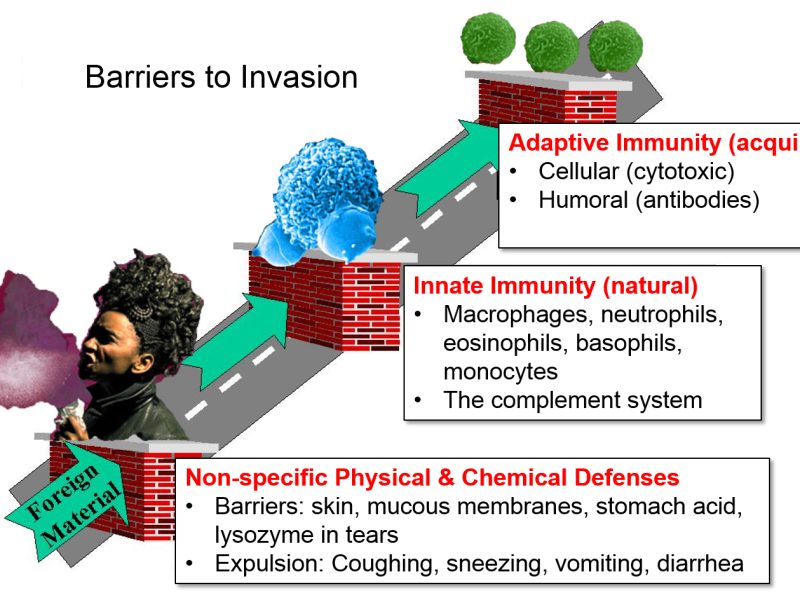Website development always seems challenging because it requires proper code input while making its design highly interactive. A good website design also needs proper maintenance, which is a big challenge for developers.
Your website is the face of your company, and that’s why it should be cluttered, perfect, and 100% unique. Visitors should get precisely what they are looking for. Your website should have a proper Content Management System (CMS).
WordPress is one of the best CMSs on the market. It is an open-source content management system worldwide; over 30% of websites are on WordPress.
A Web Developer uses HTML, CSS, and JavaScript languages to create an interactive and visually appealing website.
What is Custom Web Development?
Custom web development refers to creating websites or web applications from scratch tailored to a particular business or individual’s needs, requirements, and goals. Unlike pre-built templates or platforms, custom web development involves designing and coding every aspect of the website or application to match the client’s unique functionalities and design preferences.
In custom web development, developers work closely with clients to understand their vision, objectives, and target audience. They then design and implement a completely personalised solution aligned with the client’s branding, functionality needs, and user experience goals.
This approach provides greater flexibility, scalability, and control over the final product, allowing for features and capabilities that might not be achievable with off-the-shelf solutions.
Why Choose Custom Website Development Solutions?
Web development solutions provide functionality and design that meet businesses’ specific needs. A recent survey by Clutch found that 83% of companies prefer custom web design advertising solutions. With a customised website, companies have the flexibility to combine unique features and functionality to meet their goals and business needs. This change reduces customer disputes, improves brand image, and improves customer service.
Recent information shows the importance of responsive and mobile-friendly websites to reach a wider audience. With the increasing use of mobile devices, having a customised website performs across different sizes and platforms. Additionally, customisation allows businesses to adopt new SEO practices, increasing visibility and search engine rankings.
Security is the biggest concern for businesses operating online. According to a report from Verizon, 43% of all data breaches in 2020 involved small businesses. Web development solutions allow companies to prioritise security measures based on their needs. Developers can use effective security measures such as encrypted data transfers, secure payment gateways, and user credentials to protect user data. By investing in a dedicated website, businesses can reduce the risk of cyber threats and gain their customer’s trust.
Benefits of Web Development Advantages
Web development allows businesses with the Serial Advantage to establish an online presence. Here are the benefits of investing in web development:
1. Enhanced Brand Image and Unique Online Presence:
A custom website perfectly matches your brand image through unique visuals, colours and design elements, allowing you to stand out from your competitors and stand out unconsciously.
2. Scalability and flexibility for future growth:
Website development allows your website to adapt to needs, wants, and progress by providing the flexibility to expand features, functions, and content as your business grows.
3. Customize the user experience to increase engagement:
Web development can improve your target audience’s user interface and experience, increasing engagement and changing the browsing experience with understanding and conflict.
4. Integration of Advanced Features and Functions:
Web development can integrate advanced features and functions as the recommended structure, according to your unique business needs.
5. Improving Security and Data Protection:
Improving the website to ensure appropriate security measures are in place. Follow advanced techniques, encryption, authentication systems and regular updates to protect your website and user data. Build trust and protect your reputation.
6. SEO Friendly Structure and Optimization:
Web design improves SEO by creating the best website and rules. Following proper design, meta tags, schema markup, and other best practices can improve visibility organic rankings, and drive traffic.
7. Long-term investment:
Although web development requires more investment than a ready-made model, it provides long-term benefits. Ready-to-use templates often come with recurring costs and customisation limitations, resulting in additional costs in the long run.
8. Ongoing support and maintenance:
Web development provides ongoing support and maintenance to ensure the website remains current, secure and functional through regular updates, bug fixes and support.
Steps of Custom Web Development
Here are some crucial steps in Custom Web Development, from conception to deployment.
-
Project Discovery and Planning:
Any custom web development project starts with in-depth planning. Before you start working on any project, you must stay familiar with that specific project’s goals, target audience, and scope.
This phase involves conducting in-depth research, gathering all business requirements, and understanding business needs. At this point, you need to collaborate with stakeholders, who will share all the pain points, features, and design preferences per their needs.
-
Design and User Experience:
Once you understand project requirements, you can move to the next step of designing, which is crucial in making a website look visually appealing. User Experience should come at the forefront of design considerations.
Create wireframes and prototypes to visualise the layout and flow of the website or application. UX design ensures seamless navigation, clear call-to-actions, and an intuitive user interface.
-
Technology Stack Selection:
Choosing the right technology is another important measure of project success. Here, the technology stack includes programming languages, frameworks, libraries, and other databases.
After understanding the dynamics of a project, your choice should align with business requirements. Scalability and the team’s expertise also play an emerging role while making technology Slack selections. Moreover, you may need to consider several other factors, such as security, performance, and the integration of third-party services.
-
Front-End Development:
Front-end means users can interact directly. This development phase includes translating the code into HTML, CSS, and JavaScript. A responsive website is essential to ensure it works smoothly on various devices and screen sizes.
To make the design more attractive and engaging, you must add transitions, animations, and interactive elements to enhance user engagement.
-
Back-End Development:
Back-end development refers to building and maintaining the server-side components of a website or web application. These components handle data processing, business logic, and interactions with databases, APIs, and other external services.
Unlike front-end development, which focuses on the user interface and user experience, back-end development deals with the behind-the-scenes functionalities that enable the front end to operate effectively.
-
Integration of Third-Party Services:
Integrating third-party apps can enhance a website’s functionality and performance. These third-party apps can be very convenient for visitors who want to enjoy navigating the website.
Some third-party services include payment gateways, social media integration, and mapping services. You should opt for seamless integration by following API documentation and best practices.
-
Testing and Quality Assurance:
Rigorous testing is essential to perform before the website goes live. This action involves checking and rectifying all the issues on the website. It will be constructive in creating a good impression in front of your clients.
These tests include functional testing, usability testing, and performance testing. In the next step, you must address all the bugs and issues to make the user experience smooth and seamless.
-
Deployment:
Once you have completed the testing process and made all the required changes, deploying the custom website to a live server is correct. We must choose a reliable server and a hosting environment for proper configuration.
Test the application again after deployment so that you can work again on the functions as intended in the live environment.
-
Ongoing Maintenance and Report:
The work is ongoing; deployment is only one stage in the custom web development process. If you are developing a website, you should always know that it also requires maintenance, upgrades, and pre-defined support.
Monitoring functionalities and performance, security vulnerabilities, and user feedback is essential for improving overall functionality. Implement all the updates, fix the required bugs, and make all the changes a user wants.
-
Continuous Improvement:
Custom Web Development is a continuous process that requires some work to run the website smoothly. A developer takes care of user experience, which is one of the crucial aspects. Then, they analyse the website’s performance and gather user feedback and analytics to identify significant areas of improvement.
Once you have identified the area for improvement, start implementing all the required changes based on the user’s needs, industry trends, and technological enhancements.
How Do You Know If Custom Web Development is Right for You?
Many businesses use simple web designers or templates to create their online presence. However, investing in web development may be a better option for some organisations. Signs that your business could benefit from web development services include:
Web development may be a good choice if any of the following apply to your business:
- Your goals, products, services, and target audience have specific needs that cannot be accomplished as planned.
- You need advanced features such as private files, member areas, complex files and shared functions.
- Your business model is expanding or evolving and needs significant solutions.
- You want complete control and ownership over your website’s design, content, user experience and functionality.
- The best SEO and optimisation are crucial to your online success.
- You are creating a redesigned website to suit your business goals and target audience better.
- Your website’s content, message and design should differentiate you from your competitors.
- You have specific KPIs and ROI targets that your website needs to achieve and adjust.
- Drive long-term growth beyond initial advertising and website policies.
- Custom development will benefit more significantly than an immutable model if these conditions fit your business needs.
Why is choosing web development the right choice for many businesses?
Web development is the right choice for most businesses that want to go beyond simple online. Here’s why:
- Complete Integration—Website design can integrate your brand with your website design, content, images, fonts, colour, text, and more. This leads to consistent information throughout the process, which is difficult to achieve using standards.
- Conversion Optimization—With an optimised website, conversion rate optimisation can be incorporated from day one. The layout, calls to action, text, user flow, and functionality are designed to drive visitors to conversion.
- Audience-focused approach—Development based on audience research allows you to create experiences that match customers’ interests and motivations. Pre-made templates cannot meet customer needs.
- Scalability and Flexibility – A well-designed custom website is built on an easily scalable framework. As your business grows, you can easily add features, pages, integrations, and capabilities.
- Ownership and Control—You can access your customised website and make necessary changes and updates. Templates are generally limited to editing.
- Efficiency and Speed - Experienced developers optimise code, load times, hosting and site architecture for maximum performance. Improving with models is not easy.
- Search Engine Optimization—Custom code, metadata, URLs, page layout, and content can be optimised to improve SEO results; the template’s essential utility is limited.
- Invest in the Future—A well-designed custom website maintains its relevance and success years after its launch. It is designed to grow your business over the long term.
Conclusion
Custom web development is a rewarding journey that allows you to create a digital solution tailored to your needs. You can ensure a successful outcome by following a structured approach and paying attention to each development phase.
Each step, from project planning and design to development, testing, and deployment, contributes to delivering a high-quality, functional, and user-friendly website or application. Custom web development is an ongoing process, and embracing continuous improvement will help your project thrive in the ever-evolving digital landscape.
FAQs
What is Custom Web Development?
Custom Web Development is creating a website or application from scratch to tailor a user’s needs. The process inputs all the technical codes that involve pre-built templates, web designing, and custom coding to meet the client’s unique functionalities and design preferences.
Why is Custom Web Development important?
Custom Web Development is always essential, as it offers more flexibility, scalability, and convenience over the final product compared to pre-designed templates. It allows businesses to create unique solutions that align with their branding, functionality needs, and user experience goals, resulting in a more tailored and effective digital presence.
Why is project planning necessary in custom web development?
Project Planning is the initial stage of custom web development. It helps users identify clients’ needs, target audiences, and specific goals. Planning involves developing effective strategies and implementing all the necessary measures.
What is the role of design in custom web development?
Design plays a significant role in custom web development. It involves creating wireframes and prototypes to visualise the layout and flow of the website or application. The design focuses on user experience (UX), ensuring seamless navigation, clear call-to-actions, and an intuitive user interface.




























